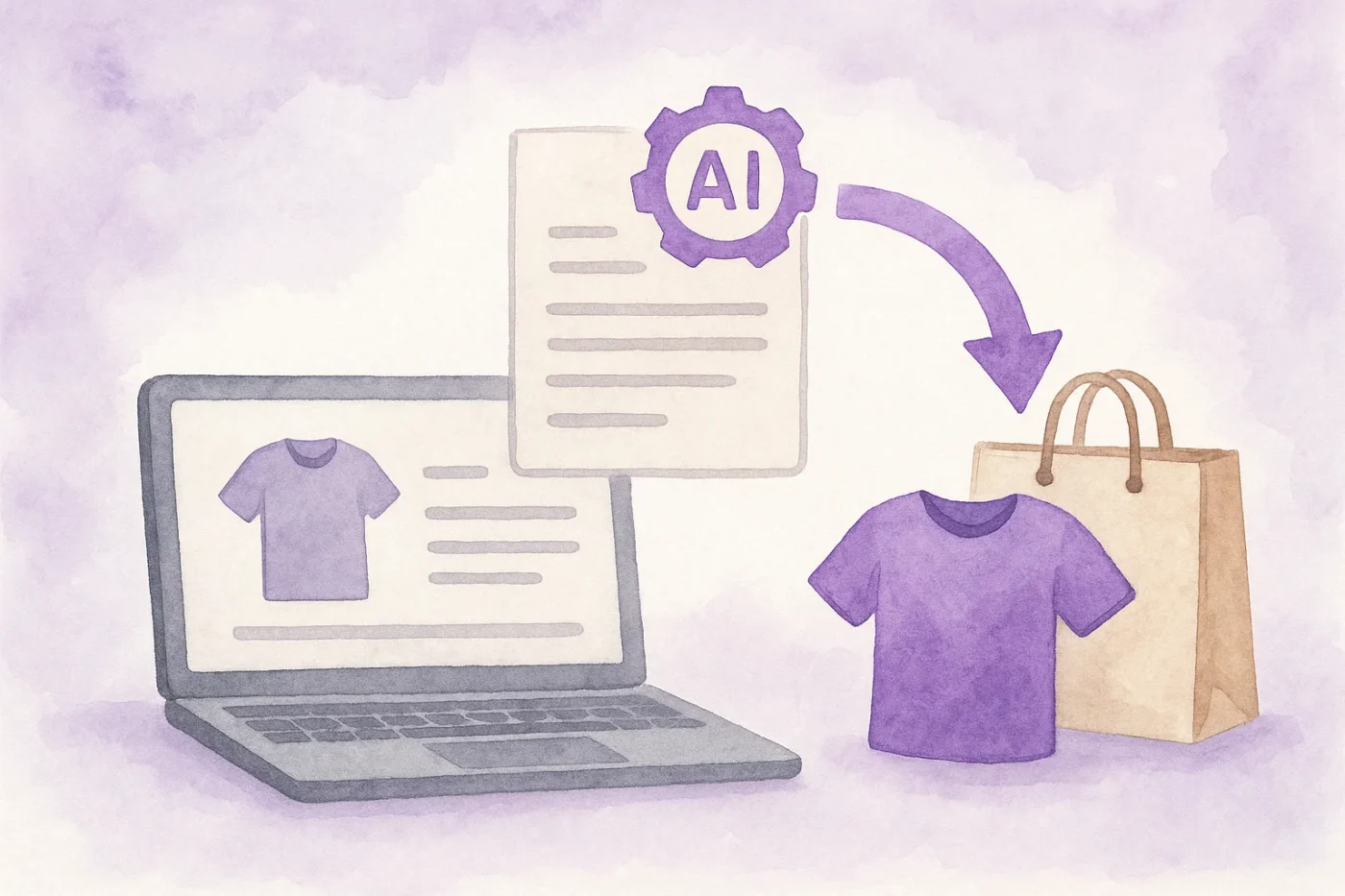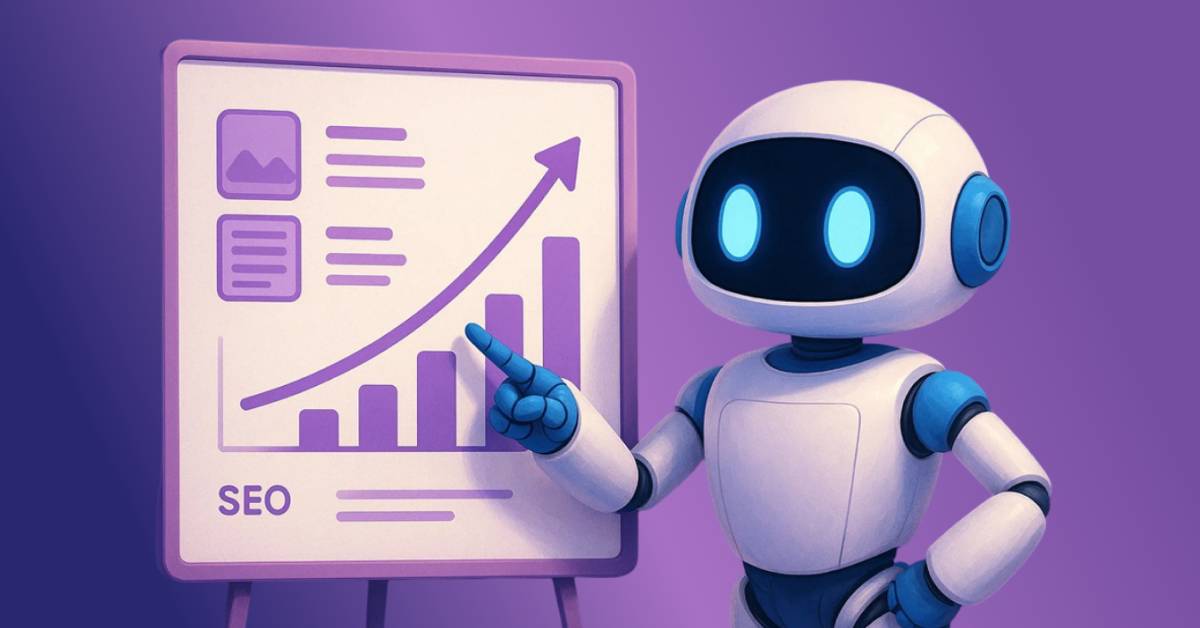AI Content for E-Commerce: Product Description Generators Save Time

In today’s fast-moving e-commerce landscape, content is more than just words, it’s a business asset, and ai content can facilitate this at scale.
AI-driven product description generators are transforming how online retailers create content, helping them keep up with the growing demand for accurate, engaging product listings without drowning in manual work.
These tools use advanced natural language processing (NLP), Large Language Models (LLMs), and machine learning to automatically craft product descriptions from minimal input, like product specs or images.
The result? What once took hours (or days) can now be done in seconds, freeing teams to focus on strategy rather than repetitive writing tasks.
But the benefits go far beyond time savings.
AI tools also enhance SEO by embedding keywords naturally, ensure consistent brand voice across thousands of SKUs, scale effortlessly with growing catalogs, and cut costs tied to hiring or outsourcing.
For e-commerce businesses looking to stay competitive and agile, AI-generated content is quickly shifting from a nice-to-have to a strategic necessity.
1. Why Product Descriptions Matter in E-Commerce
Product descriptions aren’t just filler text, they’re critical conversion tools that directly impact sales and customer satisfaction. According to recent data:
- 87% of online shoppers consider product descriptions essential when making a buying decision.
- 64% have returned items because the description was inaccurate or misleading.
- 30% abandon their carts altogether due to poor or missing descriptions.
In a crowded marketplace where customers can’t physically see or touch products, the description becomes your virtual salesperson.
It needs to inform, persuade, and reassure, all in a few short paragraphs. Whether you’re selling shoes or software, compelling descriptions can mean the difference between a sale and a bounce.
And in a high-volume, high-competition environment like e-commerce, getting every description right, at scale, is no longer optional, it’s foundational to success.
2. How AI Product Description Generators Work
At the core of AI-powered product description generators lies a combination of natural language processing (NLP) and large language models (LLMs), such as Meta’s LLAMA, trained on vast datasets of product content.
These models are designed to understand language context, structure, and persuasion techniques, enabling them to generate text that closely mimics human writing.
Modern generators don’t just rely on keyword stuffing or templates.
They parse structured inputs such as product specifications, attributes, and even images to understand what a product is, how it functions, and why it matters to the customer.
From that, they generate unique, relevant, and persuasive descriptions that align with your brand tone and target audience.
Key capabilities include:
- Contextual awareness: recognizing key features and benefits specific to each product.
- Brand voice adaptation: ensuring every description maintains consistency in tone, vocabulary, and style.
- Input flexibility: working with structured data, bullet points, or raw attributes.
Even better, many tools offer customization for specific industries or product categories, whether it’s fashion, electronics, or beauty, enabling more accurate and tailored content generation.
The result is high-quality, human-like copy that’s scalable, brand-consistent, and conversion-ready, all produced in seconds.
3. Time-Saving, Cost-Efficiency & Scalability
One of the most immediate and measurable benefits of AI product description generators is time savings.
Businesses using these tools report saving up to 50% of the time spent on content creation tasks. In some cases, AI can compress days of manual writing into a matter of seconds, especially when dealing with large product catalogs.
This acceleration has a direct impact on operational efficiency:
- Reduced human error: AI eliminates inconsistencies, typos, and formatting issues common with manual entry.
- Lower labor costs: Less reliance on large writing teams or expensive outsourcing.
- Refocused talent: Teams can shift from repetitive copywriting to higher-value tasks like customer engagement, campaign strategy, or UX improvements.
Most importantly, AI tools offer true scalability. Whether your store carries 50 or 50,000 SKUs, AI systems can generate compelling descriptions for each. Quickly and without sacrificing quality.
Unlike humans, these tools don’t fatigue, ensuring consistency and speed even as inventory grows.
For growing e-commerce businesses, this level of scale isn’t just a convenience, it’s a competitive advantage.
If you also combine this with an automatic translation software like Ovesio, you can write tens of thousands of product descriptions and translate them in over 27 languages as easy as pushing a button. (right now an API is available, but a Shopify integration is coming soon)
Conclusion
AI-driven product description generators are no longer experimental tools, they’re strategic assets for modern e-commerce businesses.
These systems deliver tangible value through massive time savings, consistent brand messaging, improved SEO, and reduced content creation costs.
However, they are not replacements for human writers.
AI excels at automation, but human oversight remains essential for ensuring creativity, emotional nuance, and factual accuracy. The most successful brands use AI to augment, not eliminate, their content teams.
As global e-commerce scales toward a projected $92.86 trillion market in 2033, businesses that adopt scalable, AI-powered content solutions will gain a clear competitive edge in both speed to market and content quality.
Looking to learn more about AI in E-Commerce? Here’s a great read for you: The Rise of AI Translation in E-Commerce: What You Need to Know in 2025
Frequently Asked Questions
1. Are AI-generated descriptions SEO-friendly?
Yes. Most AI tools automatically include keywords and structure content to meet SEO best practices while maintaining natural readability.
2. Will AI replace human writers?
No. AI is a support tool. Human input is still needed for creativity, emotional connection, brand storytelling, and final quality control.
3. How accurate are AI-generated descriptions?
Accuracy is generally strong, but AI can “hallucinate” or misstate facts. It’s crucial to fact-check all critical product details before publishing.
4. Which platforms offer the best AI tools for e-commerce?
Leading options include Jasper AI, Copy.ai, Describely, Narrato, and Writesonic, each offering features like bulk creation, brand tone customization, and e-commerce integrations.
5. Can AI scale for large product catalogs?
Absolutely. AI generators can create thousands of consistent, high-quality product descriptions quickly, ideal for growing inventories and multi-category stores.





